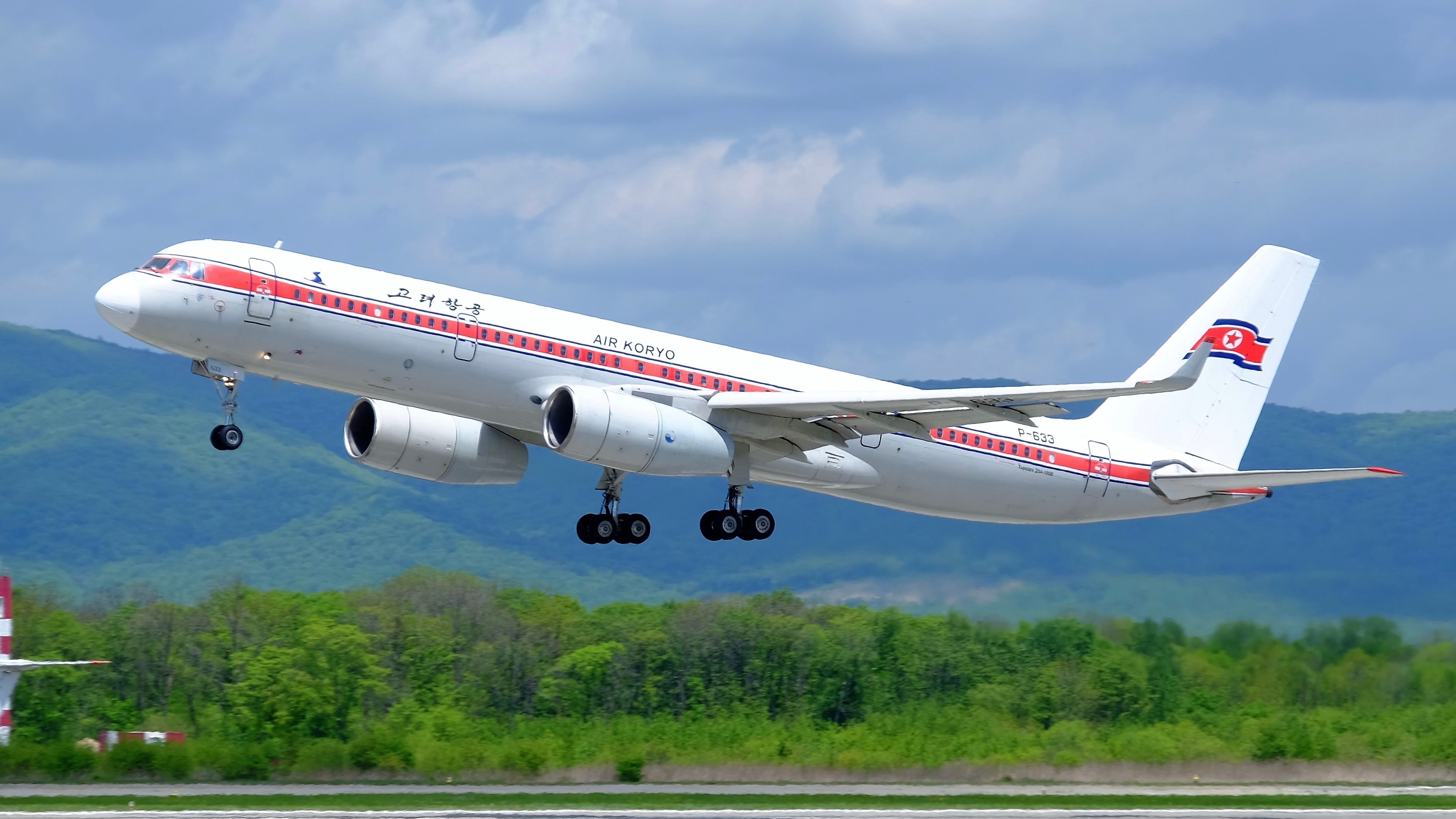Summary
- Air Koryo, North Korea's flag carrier, has been an integral part of the country's aviation industry since its founding in 1955.
- The airline relied heavily on Soviet production and underwent a revamp in the 1990s but faced safety concerns and a ban in the European Union.
- Air Koryo's fleet includes a mix of aged aircraft.
As the flag carrier of North Korea, Air Koryo is often viewed as the world's most mysterious airline. There have been numerous rumors surrounding the operator over the decades, but it has undoubtedly been an integral member of the country's aviation industry since its founding.
Entering a new era
The 1950s was a significantly sensitive period in Korean and global politics. During the scaling up of the Cold War, the Soviet Union was increasing its presence across Europe and Asia.
Subsequently, a Soviet-Korean airline in the form of SOKAO was formed in 1950. Operations were halted during the Korean War, but flights restarted in 1953 under the moniker of UKAMPS.
Following the de facto end of the Korean War in July 1953, the carrier was soon switched to be controlled by the Civil Aviation Administration of Korea (CAAK). Services under the North Korean authority then began on September 21st, 1955.
Andrei Lankov writes in North of the DMZ:
“Air Koryo has always been an agency of the Korean People's Army; it is subordinated to the Bureau of Civil Aviation, which in turn belongs to the KPA Air Force. Therefore, all of the pilots are Air Force officers on active duty, and in case of war its small fleet can be switched to military use in an instant,
“In 1958 the first air route connected Pyongyang with two major cities in the northern part of the country - Hamhŭng, and Chŏngjin. However, this first domestic service was far from an instant success. The restrictions on domestic travel combined with low incomes prevented North Koreans from becoming frequent users of domestic air flights, thus the service was cut back and eventually discontinued.
Lankov added that the South Korean flag carrier, KNA, also suffered from similar issues in the late 1950s.
Get the latest aviation news straight to your inbox: Sign up for our newsletters today.
Adapting to the transitions
Despite now being a North Korean state entity, the airline still relied heavily on Soviet production. For instance, the Tupolev Tu-154 helped kick off jet service for the airline, with flights launching to Moscow, East Berlin, and Prague.
After the end of the Cold War, it was time for a revamp. CAAK rebranded the airline as Air Koryo in March 1992. The following year, it ordered three Il-76s for freight services across Russia and China. However, flights wouldn't go so smoothly in this next chapter.
An Air Koryo Tupolev Tu-154B had a runway excursion when touching down at Beijing Capital International on August 15th, 2006. This was the same year that the airline was banned in the European Union due to safety and maintenance worries.
The airline was allowed to fly to the EU with specially fitted Tu-204 aircraft from March 2010, but this is the only type that the carrier can fly into the region's airspace with. Regardless, IATA recently deemed Air Koryo as safe despite the ban across the EU.
Over the years, the airline has headed to several international hotspots, including the Czech Republic, Germany, Hungary, Japan, Kuwait, Malaysia, Serbia, Switzerland, and Thailand. Today, from its hub of Pyongyang International Airport, Air Koryo heads to a handful of international destinations, including Vladivostok, Russia; Beijing, China; Shenyang, China; and Macau.
Find more news about Asian aviation here.
The fleet mix
Air Koryo uses its combination of Eastern European aircraft to fly to these destinations. Today, the fleet comprises of:
- An-148-100 x 2
- Il-18D x 1
- Il-62M x 3
- Il-76TD x 3
- Tu-134B-3 x 2
- Tu-154B x 2
- Tu-204-100 x 1
- Tu-204-300 x 1
According to ch-aviation.com, Air Koryo has a total capacity of 1,228 seats in its fleet, which averages an age of 33.2 years. The oldest member in the facilities is the Soviet Union's 54-year-old Il-18D, holding registration P-835. This aircraft was rolled out in February 1969 before joining Chosonminghang, a predecessor to Air Koryo, a month later.
The second-oldest member of the fleet is the 47-year-old Tu-154B, holding registration P-552. This aircraft joined Air Koryo in May 1976 and was followed by P-561 in May 1984.
The overall age of the fleet would be much lower if it wasn't for the pair of An-148s that offer an average age of 9.8 years.
Looking ahead, Air Koryo is keen to modernize its fleet. Nonetheless, it's looking to keep carrying on the trend of working with countries that were members of the Soviet Union. Notably, in 2019, North Korea informed Russia that it was interested in buying new passenger aircraft.
With Air Koryo's network's post-COVID recovery taking longer than most segments across the industry, the airline's activity was largely on hold until recently. Nonetheless, China approved the resumption of flights from North Korea last month, with Air Koryo conducting the first post-pandemic operation from its country to its neighbor.
The service was between Pyongyang and Beijing Capital International. The momentum continued, with the carrier resuming flights to Vladivostok in Russia after three years.
Still, plans of grander expansions will likely remain non-existent for a while, with an aging fleet flying out of a heavily restricted nation when it comes to general air travel. After all, in 2019, just 5,000 Western and 120,000 Chinese tourists visited North Korea. Moreover, members of the local population can only leave the country with permission from the government.
What are your thoughts about the history of Air Koryo? What do you make of the airline’s operations over the years? Let us know what you think of the carrier and its services in the comment section.
Source: ch-aviation.com; North of the DMZ: Essays on Daily Life in North Korea

